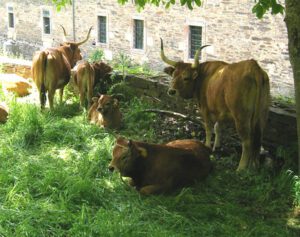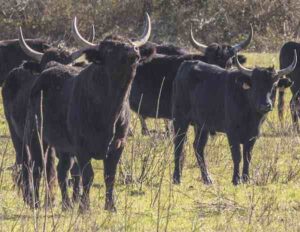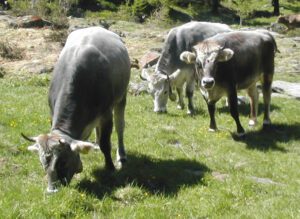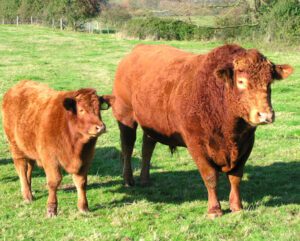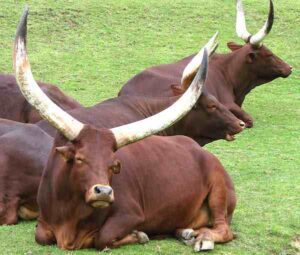The Red Angus cattle are mainly used for meat production and they originated from Scotland. As the name suggests, they are red in color and are actually selected from the population of Aberdeen Angus cattle.
The black Angus cattle are more fashionable and common than the red version. In the United Kingdom, both black and Red Angus cattle are registered in the same herd book. But they are registered as two separate breeds in the United States.
The recessive red gene is responsible for the red colored Angus cattle, and it is still producing some red animals. The Red Angus Association of America was founded in 1954, based in Sheridan, Wyoming. Registration was conditional on meeting performance targets to create a superior breed.
The Red Angus cattle breed is now popular in countries like Australia, and is famous for it’s beef. Read more information about this breed below.
Red Angus Cattle Characteristics
Red Angus cattle are similar in conformation to the Aberdeen Angus cattle. They have all of the characteristics of Aberdeen Angus cattle. They are medium to large in size with red colored coat.
They are naturally polled. Average live body weight of the Red Angus bulls is around 850 kg. And the cows on average weight around 550 kg.[1]

Uses
The Red Angus cattle are noted for their superior meat. They are different in color, but their meat quality is not different from that of the Black Angus.
Special Notes
Just like the Aberdeen Angus, Red Angus cattle are also very hardy because of their native environment. They are renowned for their longevity in the herd. They are very fast growers and mature earlier.
They produce marbled meat, and the meat is also highly desired in butchers, supermarkets, restaurants, and in the home. The cows reach maturity at a young age and are highly fertile.
Unlike the Black Angus cattle which are mainly used for meat production, the Red Angus cattle are also raised for milk production. The cows have excellent milk production capabilities and have a strong maternal instinct.
In case of temperament, the Red Angus cattle are very gentle natured and it’s very easy to care for them. Review full breed profile of this breed in the following table.
| Breed Name | Red Angus |
| Other Name | Aberdeen Angus |
| Breed Purpose | Milk, Meat |
| Special Notes | Very hardy and strong, well adapted to cold climates |
| Breed Size | Medium to large |
| Bulls | Around 850 kg |
| Cows | Around 550 kg |
| Climate Tolerance | All Climates |
| Coat Color | Red |
| Horned | No |
| Milk Yield | Good |
| Rarity | Common |
| Country/Place of Origin | Scotland |

